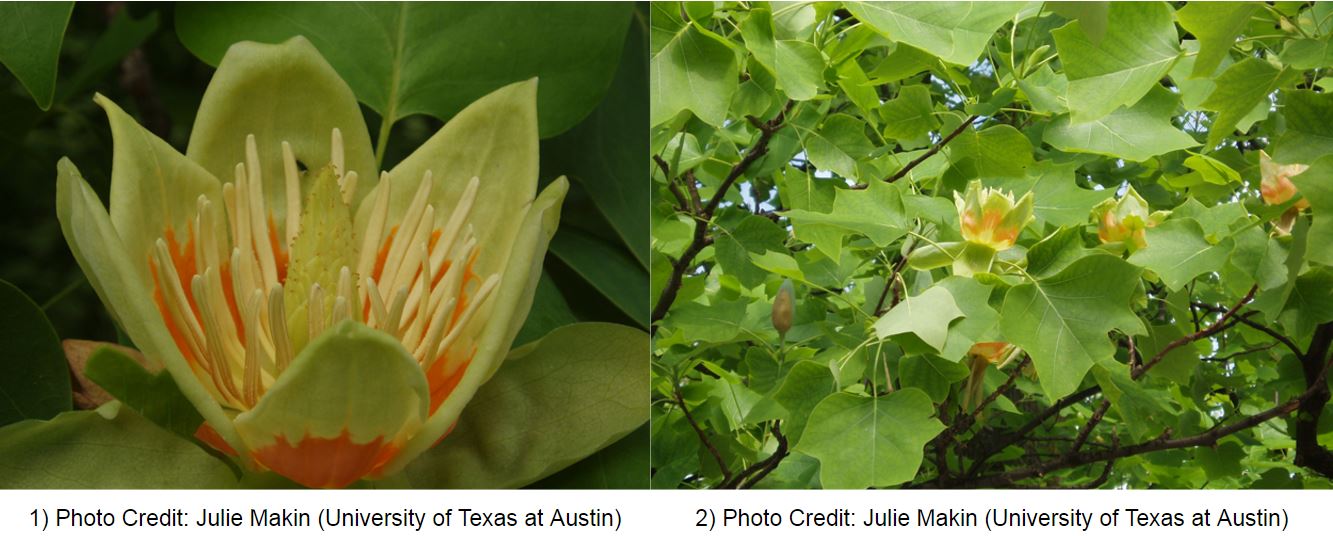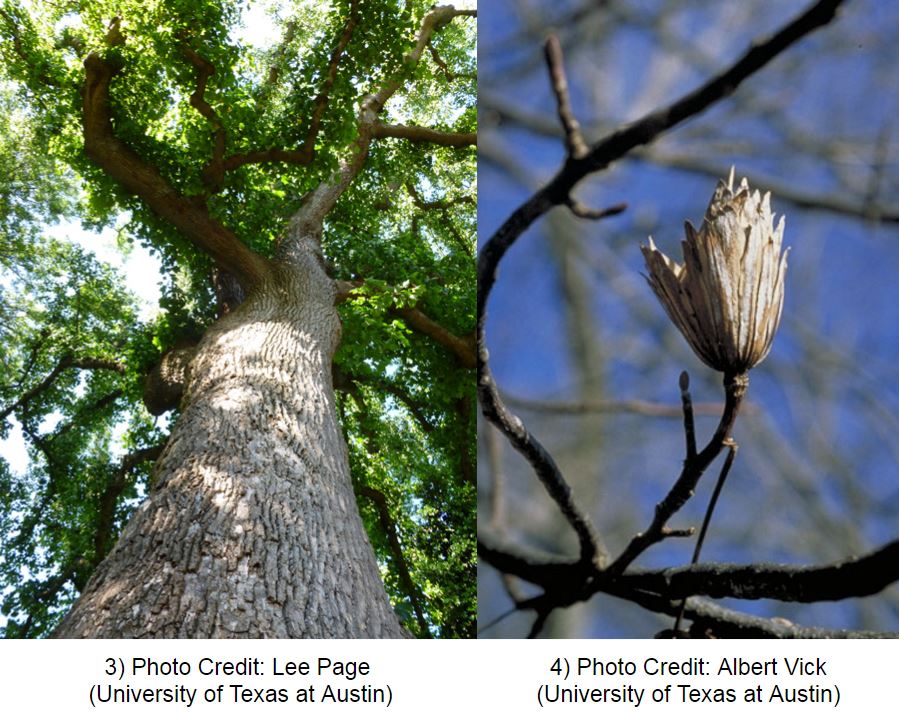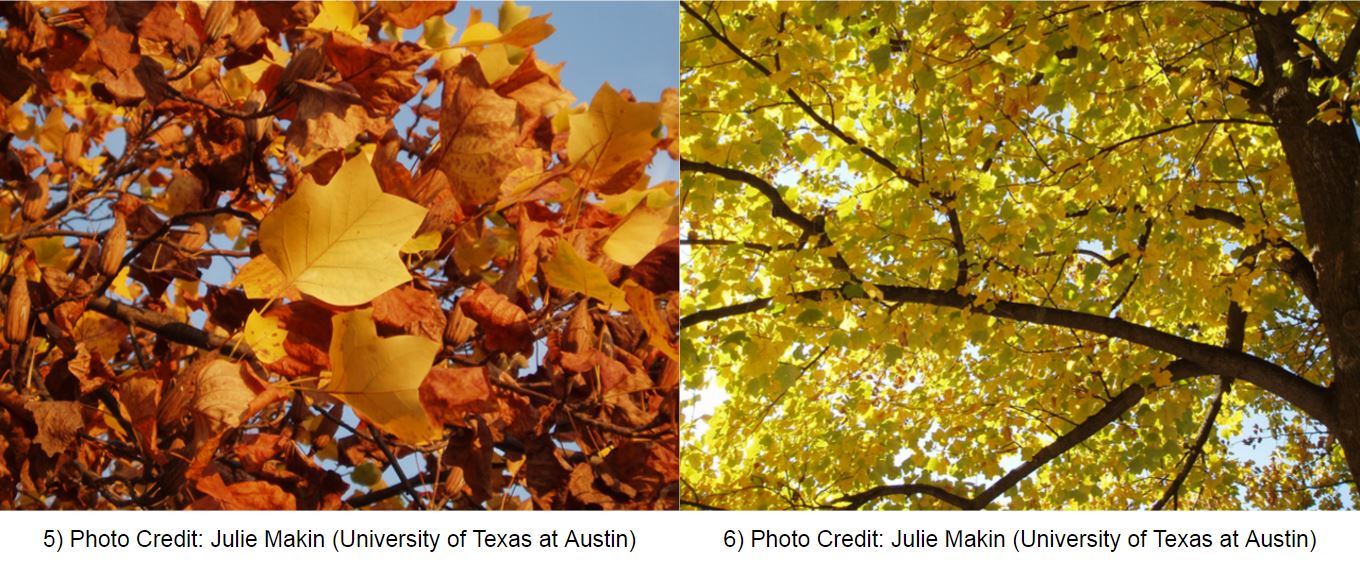By: Nick Schreiber
If you are a Minnesotan looking for a unique tree to plant in your yard, tulip poplar, Liriodendron tulipifera, is a great choice. With brilliant, yellow fall colors and showy, yellow-green flowers, tulip poplar is guaranteed to impress your neighbors. While it is not native to Minnesota, it can grow in the southern half of the state. Its cold hardiness zones are 4-9.
Tulip poplar is considered an ornamental and shade tree. It can be planted in yards or as a boulevard tree. It is a very straight tree with a mature height ranging between 70-90 feet and a mature crown spread of 40 feet. The bark is light gray and becomes vertically fissured with age. It can grow in soils that are not extremely dry or wet and low in nutrients. It grows well in loamy, acidic, moist, well-drained and clay soils. Full sun, at least six hours a day, is ideal for tulip poplar growth. In optimal conditions, it can grow 24 inches per year or more. However, since tulip poplar is at the northern extent of its range in Minnesota, it will likely not grow more than 24 inches per year.
No other tree in Minnesota have leaves like the tulip poplar. It has unique 3-6 inch lobed leaves. A shallow v-notch on the end of the leaf gives the leaf its distinctive appearance. Leaves usually have 4-6 pointed lobes. Not only is the tree pleasing to the eye, but it is a valuable food source for wildlife. White tail deer and rabbits browse young trees in the fall and winter. In the spring, ruby-throated hummingbirds drink nectar from its flowers. Mature seeds provide sustenance for mammals and birds throughout the summer into the winter.
Since Minnesota is on the northern edge of tulip poplar’s range, care should be taken when planting it. In order to reduce or prevent winter damage, the tree should not be planted on northern exposures that receive little sun nor in areas that are very windy. On young trees, coarse woody mulch can be applied around the tree base in the late fall in order to reduce the chance of root injury due to extreme cold. Once spring arrives, the mulch should be removed. As Minnesota winters have shown a warming trend, tulip trees will be another possible option to plant in the upper mid west.
References
Arbor Day Foundation. “Tuliptree.” 2016. http://bit.ly/2k4Iaeg
United States Department of Agriculture. “Minnesota Forest Ecosystem Vulnerability Assessment and Synthesis: A Report from the Northwoods Climate Change Response Framework.” 2014. http://bit.ly/2jM3PqE
U.S. Forest Service. “Yellow-Poplar.”n.d. http://bit.ly/2jHIqDT
Photos
- Makin, Julie. Liriodendron Tulipifera L. Digital image. Lady Bird Johnson Wildflower Center. The University of Texas at Austin, 26 Mar. 2014. Web. 3 Feb. 2017. <http://bit.ly/2k53aRZ>.
- Makin, Julie. Liriodendron Tulipifera L. Digital image. Lady Bird Johnson Wildflower Center. The University of Texas at Austin, 31 Jan. 2012. Web. 3 Feb. 2017. <http://bit.ly/2kBKkFj>.
- Page, Lee. Liriodendron Tulipifera L. Digital image. Lady Bird Johnson Wildflower Center. The University of Texas at Austin, 14 June 2012. Web. 3 Feb. 2017. <http://bit.ly/2l1zsS5>.
- Vick, Albert F.W. Liriodendron Tulipifera L. Digital image. Lady Bird Johnson Wildflower Center. The University of Texas at Austin, 25 Sept. 1990. Web. 3 Feb. 2017. <http://bit.ly/2kqoyCb>.
- Makin, Julie. Liriodendron Tulipifera L. Digital image. Lady Bird Johnson Wildflower Center. The University of Texas at Austin, 27 June 2013. Web. 3 Feb. 2017. <http://bit.ly/2l1txfR>.
- Makin, Julie. Liriodendron Tulipifera L. Digital image. Lady Bird Johnson Wildflower Center. The University of Texas at Austin, 31 Jan. 2012. Web. 3 Feb. 2017. <http://bit.ly/2l1uhkQ>.


